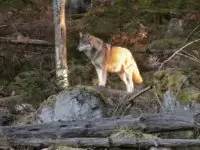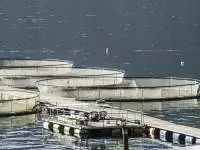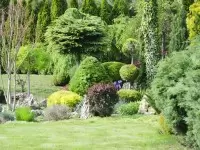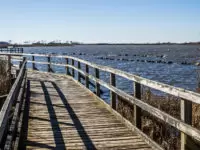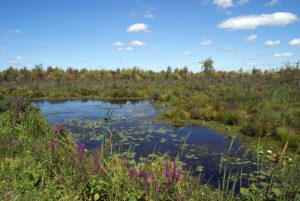
Wetlands Biologists study the life and conditions of life that exist within wetlands - both plant and animal.
What Does a Wetlands Biologist Do?
Wetlands Biology is a growing area within the niche of biology and biological sciences. Biology is the study of all life - plant and animal - and how they interact with the world around them. Specifically in the case of wetland biology, it will be about the relationship between the wetlands environment and the life that lives there. These environments are important whether they are seasonal or permanent wetlands and the environmental biology of wetlands requires as much protection as other landscapes.
Wetlands Biologists will have a thorough understanding of the wetlands environment, and are able to work in a variety of roles within that environment. Typically, some will work outside, monitoring such data as population levels, population trends (which species are present and what time of year and in what numbers) and other ongoing monitoring programs related to biological life. Some may specialise (fish, birds or insects) or they may be generalists and will often work alongside wetlands specialists who monitor physical, ecological and chemical elements.
Some may work in offices, processing data and processing reports for various stakeholders. These could be government bodies such as the EPA or NPS, or they could be for charities or private owners. Some landowners create wetlands as reserves or are under obligation to monitor and protect them.
They may also work in zoos or parks, parts of conservation programs or in public education. Most science education roles, conservation jobs and environmental monitoring should be open to wetlands biologists.
Where Does a Wetlands Biologist Work?
This niche area has little data in terms of which specialists are employed in which areas. However, for classification purposes they are considered environmental scientists. According to 2015 statistics, the largest area employing this type of professional is management, scientific and technical consulting services. Some 23% are employed in this sector. They will work for independent contractors, carrying out work for private businesses and government. Typically working in small units, they will carry out assessments either for academic record purposes or ahead of residential or commercial development. They may also carry out independent assessments to evaluate the impact of local action.
22% of employees in this sector work for state government, monitoring local impacts and reporting to decision makers and those responsible for environmental protection in the state. They may work directly for government bodies or indirectly, but responsible for state-owned property (state parks). Local government employs 13% in similar roles. 6% work for Federal government at organizations such as the EPA and NPS.
Engineering services employ around 10%. They will work with and alongside construction professionals, architects and civil engineers to ensure that environmental protection standards are adhered and monitor for any potential impact.
What Is the Average Wetlands Biologist Salary?
Wetlands biologists, who fall under the broader BLS category of zoologists and wildlife biologists, earned a median salary of $66,350 as of May 2020. The lowest 10% reported a salary of around $41,720, and the highest 10% of earners reported a salary of more than $106,320. The highest paying sector was reported as Federal government with an average salary of $81,530.*
Wetlands Biology Jobs & Job Description
Wetlands biologists study, manage and protect wetlands environments, including plant and animal life. Job duties can vary significantly depending on the type of job and employer, but a typical job description for a wetlands biologist would likely include:
- Conduct research on wetlands areas, including observing plants and animals and collecting data and samples from the field
- Inventory or estimate plant and wildlife populations
- Create detailed plans for wetland identification, restoration and protection
- Analyze samples and data collected in the field in a laboratory setting
- Prepare written reports outlining research findings
- Design and conduct mitigation procedures for construction projects in wetland-adjacent areas
- Write proposals or grant applications to obtain funding for use in conservation or restoration efforts
A senior wetlands biologist would likely perform the job duties described above, as well as act as an expert on conservation issues. He or she may:
- Make recommendations on management systems and planning for animal populations and habitat, consulting with stakeholders and community groups
- Inform the public and other stakeholders about the state of the wetlands by writing reports and scientific papers or journal articles and by making presentations or giving lectures at schools, clubs, wildlife interest groups and park interpretive programs
- Design scientific studies on wetlands areas and act as consultant for construction professionals to ensure environmental impact of new construction is limited
What Is the Job Demand for Wetlands Biologists?
Wetlands have seen an increasing focus worldwide in the last few decades with much effort made to maintain and preserve their environments. The job demand for wetlands biologists is expected to grow by 5% between 2020 and 2030.* Climate change mitigation in line with Federal law and international agreements will focus on reducing greenhouse gas emissions, but also on preserving fragile landscapes such as wetlands. This will mean greater focus on the environmental sciences and promotion of degree courses for graduates.
What Are the Education Requirements to Become a Wetlands Biologist?
A degree is essential at the very minimum. High school students should achieve good grades in the traditional science subjects - physics, chemistry, biology and math in order to be considered for a relevant degree course. The student should also focus on geography, as degrees relevant to wetlands biology will require understanding of ecology, environmental science and other geoscience related concepts.
There are no degrees in wetlands biology, so the student should study for relevant and obvious degrees centered on the subject. Naturally, this will include biology and geography, but the student should take relevant minors and electives such as ecology and environmental studies and other related subjects. We recommend tailoring coursework to conservation and to wetland preservation in particular. A bachelor's degree will be sufficient for most entry-level jobs, but for any role of greater responsibility include research and report writing, the student should study a master's degree. Fish & Wildlife Management is a useful degree choice, as is anything related to landscape studies including GIS and remote surveying. We recommend where available, that the student study these geographic technologies.
Students with aptitude, and also those who wish to enter into an academic career (rather than as applied science) should study a doctorate. PhD programs are best for those who desire high-level decision-making and academia, but not suitable for those who would prefer to work in the field.
Wetlands Biology - Related Degrees
What Kind Of Societies and Professional Organizations Do Wetlands Biologists Have?
Wetlands biology is now a globally recognized conservation issue. Here are some representative bodies.
- Society of Wetland Scientists: SWS is the world's largest organization dedicated to protection and research of wetlands. They offer certification globally, ensuring standards no matter where the professional studied or works
- Association of State Wetland Managers: This non-profit organization was founded in 1983 as a way to promote conservation of wetlands in the US. Their goal is to encourage dissemination of information between stakeholders (Federal, state and tribal) to understand and protect our wetlands
- Wetlands International: This global body promotes wetlands for scientific, conservation and human use, realizing that people who live in these environments depend on them for their livelihoods
*2020 US Bureau of Labor Statistics salary figures and job growth projections for zoologists and wildlife biologists reflect national data not school-specific information. Conditions in your area may vary. Data accessed September 2021.


